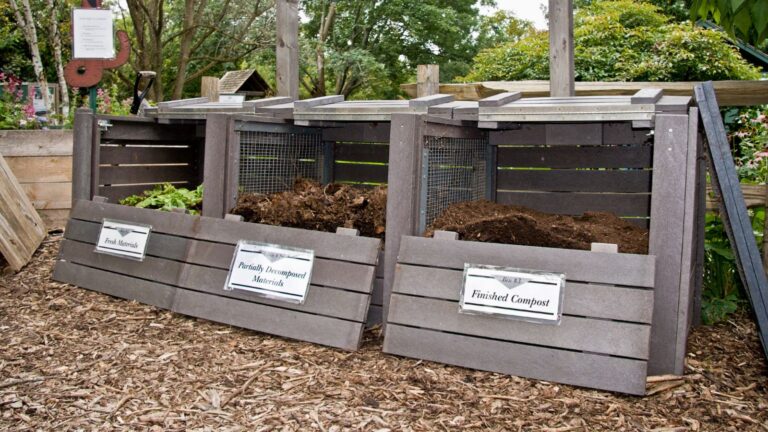
[ad_1]
Starting your own compost bin is a great way to reduce your household’s waste output and create nutrient-rich soil for your garden. Composting is a natural process that breaks down organic waste into a nutrient-rich material that can be used to fertilize plants. In this ultimate guide, we’ll walk you through everything you need to know to start your own compost bin at home.
Step 1: Choose Your Composting Method
There are several different ways to compost, so it’s important to choose the method that will work best for your household. Some common methods include:
Outdoor Composting
Outdoor composting involves creating a compost pile or using a compost bin in your yard. This is a great option if you have a lot of yard waste, such as leaves and grass clippings, to add to your compost.
Indoor Composting
Indoor composting is a good option for those who don’t have a lot of outdoor space or who live in an apartment. This method involves using a special compost bin designed for indoor use.
Step 2: Choose Your Composting Bin
Once you’ve decided on your composting method, it’s time to choose your compost bin. There are many different types of compost bins available, including:
Tumbler Compost Bins
Tumbler compost bins are designed to make it easy to turn your compost pile. These bins have a drum that rotates, allowing you to mix your compost without having to use a pitchfork or shovel.
Worm Bins
Worm bins are designed to house red worms, which help to break down your organic waste. These bins are typically used for indoor composting.
Step 3: Collect Your Organic Waste
Once you have your compost bin, it’s time to start collecting your organic waste. This can include fruit and vegetable scraps, coffee grounds, eggshells, and yard waste.
What Not to Compost
While many organic materials can be composted, there are some items that should be avoided, including:
– Meat, bones, and dairy products
– Fats, oils, and grease
– Pet waste
– Diseased plants or weeds with seeds
Step 4: Begin Composting
With your compost bin in place and your organic waste collected, it’s time to start composting! Here are some tips to get you started:
Add Browns and Greens
Compost requires a balance of “browns” and “greens.” Browns include things like leaves, sawdust, and straw, while greens include items like food scraps and grass clippings.
Keep It Moist
Compost requires moisture to break down properly. Keep your compost bin moist, but not too wet.
Turn Your Compost
Turning your compost regularly helps to aerate it and speed up the composting process.
Step 5: Use Your Compost
After a few months, your compost will be ready to use! Use it to fertilize your garden or potted plants.
Final Thoughts
Starting your own compost bin is a great way to reduce your household’s waste output and create nutrient-rich soil for your garden. By following these steps, you’ll be on your way to successful composting and a healthier, more sustainable home.
[ad_2]